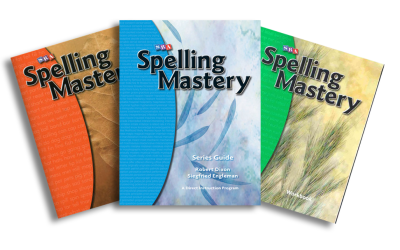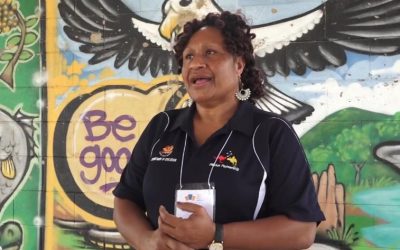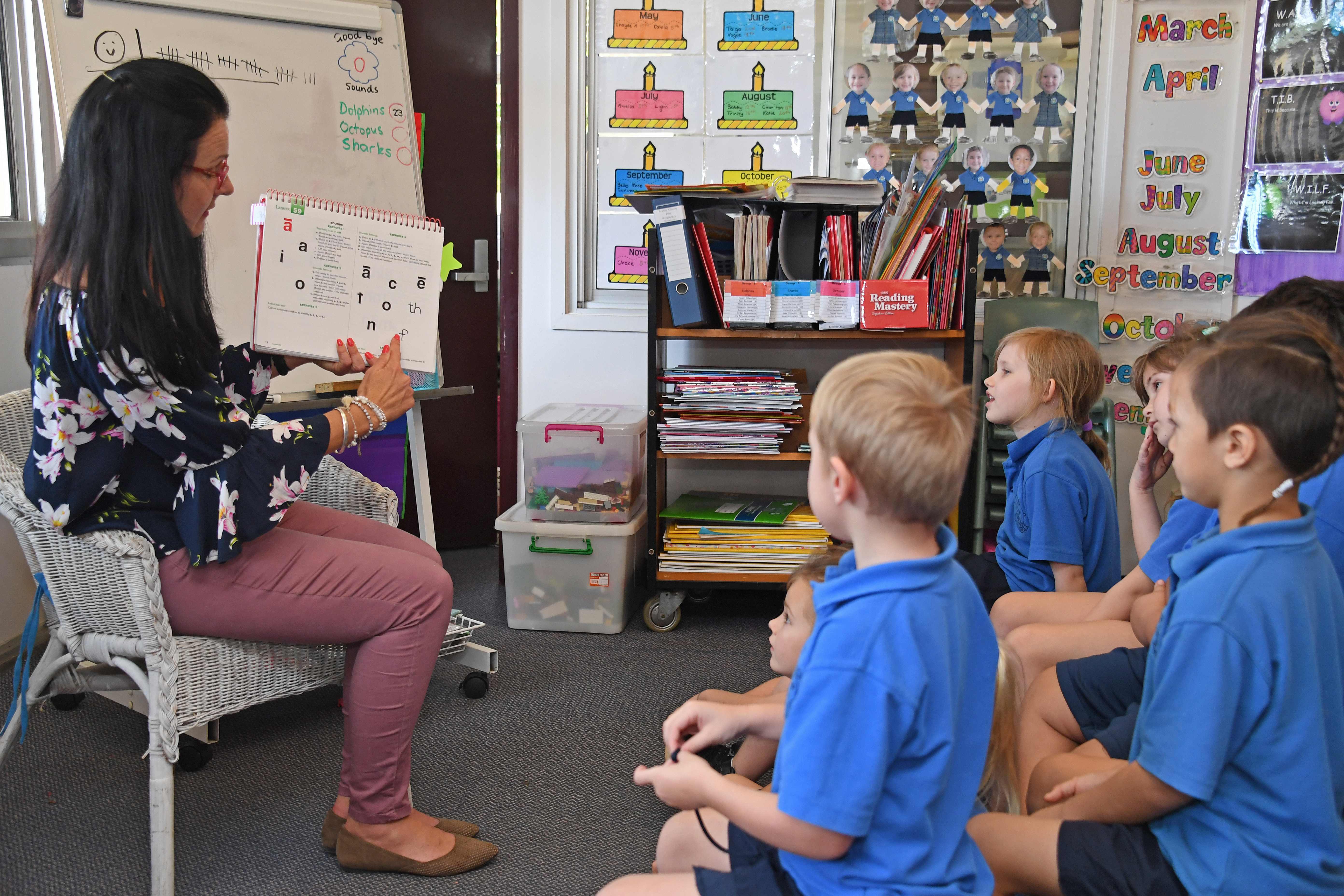Introduction
When it comes to catering to the diverse learning needs of students, one effective approach that schools can implement is ability grouping. By grouping students according to their abilities rather than their year groups, teachers can provide targeted instruction and support to help each student reach their full potential. In this blog post, we explore:
- what ability groups are
- how to place students into ability groups
- the benefits of this approach
- the role of ability groups in explicit instruction
- alternatives to ability groups
- what renowned educator Anita Archer has to say about this practice.
What Are Ability Groups?
Ability grouping is an organisational strategy or technique implemented by teachers to cluster students into learning groups based on their shared academic level.
This technique diverges from the age or year group placement found in most traditional classrooms. It fosters an environment where instructional content, pace, and complexity are tailored to align with the collective capability of each group.
This technique is more nuanced and effective at finely tuning instruction to address the distinct learning trajectories and requirements of individual students. The primary objective is to enhance educational engagement and outcomes by ensuring that all learners, irrespective of their starting point, are provided with opportunities that correspond to their individual academic needs and potential for growth. In practice, this means that learners demonstrating similar strengths and areas for development are grouped together, thereby streamlining the instructional process.
Ability grouping is dynamic and fluid, with the possibility of movement between groups as students’ abilities evolve over time, ensuring that the educational experience remains both challenging and accessible. This model champions the ethos of differentiated instruction at its core, seeking to lift the academic journey of every student through bespoke educational pathways.
Placing Students into Ability Groups
The process of placing students into ability groups is achieved through an assessment strategy designed to gauge the existing skill sets and academic aptitude of each learner. This initial step typically uses a variety of placement tests and evaluative tools, offering educators a detailed insight into the strengths and developmental areas of their students.
In practice, this might involve standardised tests, teacher observations, and ongoing formative assessments to paint a comprehensive picture of each student’s capabilities. The use of a multifaceted approach to placement ensures a robust and equitable process, minimising the risk of misplacement and the potential for educational disengagement.
Flexibility is an important aspect of this process. Recognising that student abilities are not static but evolve with time and instruction, the grouping strategy accommodates periodic reassessment. This inherent flexibility allows for adjustments to group composition, reflecting the fluid nature of learning and ensuring that instructional alignment remains optimal.
Teachers, armed with the rich insights of these assessments, are thus empowered to develop an educational environment that is both supportive and challenging. This strategic placement is the cornerstone upon which tailored instructional practices are built, marking the start of a personalised learning journey designed to maximise student engagement and academic progression.
Schoolwide or Classroom Ability Groups
A decision must be made by the school as to whether students will stay in their classroom but be broken into small ability-based groups, or move to other classrooms to ‘walk to learn’ to another class, to be with students at their ability level. A walk to learn groups model gives more flexibility in grouping decisions.
Good to Great Schools Australia (GGSA) recommends that schools delivering Direct Instruction, or any other mastery-based program, across multiple grades or schoolwide, placement test their students and organise them into ability groups that are closest to their Zone of Proximal Development.
Lev Vygotsky’s Zone of Proximal Development (ZPD) refers to the gap between the student’s actual level of development and the level of potential development or defined learning goals in knowledge and skills they are attempting to reach. The ZPD is the starting point for a student’s learning and defines their current level of knowledge. When a teacher knows a student’s ZPD, they can then teach them to master the learning goal through small incremental steps at a level that is just above their independent level of functioning but not so high that it is out of their reach.
The more groups a school can set up, the closer every student can be placed to their ZPD. Students will make the most progress and achieve the highest mastery when placed as close as possible to their ability. Not only can they complete the content, but they will be more engaged as they are challenged enough to be able to do the work but not enough to get bored.
Many schools set up their timetable so they can deliver some subjects at students’ grade level (such as science, HASS, etc) and literacy and numeracy subjects in ability groups. Some worry this might be disruptive and lose valuable learning time, but it is amazing how quickly students and teachers adjust and how normal it quickly becomes. For social reasons students are usually only grouped with students a year above or below their own age.
Building groups requires the consideration of how many teachers or teaching assistants have the training and experience to deliver instruction. Another factor is the recommended size of the group. A good rule to remember is the further behind the group of students is, the smaller their group should be.
If schoolwide implementation is not possible, classroom teachers can break students into their own groups within the class. This grouping will not get the most value and effectiveness out of the program and students will not make as much progress as they could. Students may be regrouped if they are outperforming or underperforming others in the group.
Below is a testimonial from Felicity Wilde, Assistant Principal Learning and Teaching at a Catholic school in Northern New South Wales, outlining her school’s experience implementing ability based groups.
“We introduced classes based on Spelling Mastery placement testing this year and it has been fantastic. We set up classes to try to keep as many students at the same level together, have some move, just for spelling, and some go to smaller groups with extra teachers. Some staff were concerned that students would notice the “streaming” and impact their self esteem but the result has been the complete opposite. Students who have spent their entire schooling feeling like “failures”, because they were never able to achieve at the same level of their peers, are experiencing success and their self worth in the classroom has sky-rocketed. They are taking risks and feeling successful as they, for the first time in a long time, are seeing green in their results. We are able to teach the kids exactly where they are at and as a result are seeing growth we have never seen before. I encourage people to put aside their fears and, if it is possible in your school setting, to take on spelling Mastery, in “ability” groups. Your kids will thank you for it.” – Felicity Wilde, Assistant Principal-Learning and Teaching, St Mary’s Primary Casino
The Benefits of Ability Grouping
Improved Instructional Efficacy
The advantages of ability grouping within educational settings are multifaceted, extending far beyond mere academic achievement. One significant benefit is the enhancement of instructional efficacy. By categorising students based on their learning proficiencies, educators can tailor their teaching strategies to suit the distinct requirements of each group. This bespoke approach enables a more focused and in-depth exploration of subject matter, fostering a deeper understanding and retention of knowledge.
Increased Student Engagement and Motivation
Ability grouping can significantly contribute to an increase in student engagement and motivation. When learners are placed in an environment that mirrors their proficiency level, they are more likely to participate actively and exhibit a heightened interest in their studies. This is particularly beneficial for those who may feel alienated in a mixed-ability setting, either due to the pace being too rapid, thus leaving them behind, or too slow, leading to disengagement. The tailored pace and challenge level within ability groups ensure that every student is adequately supported and stretched, promoting a sense of achievement and encouraging a positive attitude towards learning.
Improved Social and Emotional Wellbeing of Students
An additional advantage lies in the social and emotional wellbeing of students. Ability grouping can help in creating a supportive learning atmosphere where students feel understood and valued for their individual capabilities. This can significantly reduce feelings of frustration and anxiety associated with learning, fostering a positive classroom climate conducive to educational and personal growth.
A More Personalised Learning Experience
Overall, the implementation of ability grouping has the potential to transform the educational landscape by offering a more personalised and effective learning experience, thereby addressing the diverse needs and aspirations of all students.
What Role Does Ability Grouping Play in Explicit Instruction?
Ability grouping is often a feature of explicit instruction pedagogical approaches. Explicit instruction is predicated on the unambiguous and systematic delivery of educational content. Explicit teaching seeks to meet learners where they stand in their academic journey, so aligning instruction to the ability levels of students.
That is why many explicit instruction pedagogical approaches are called mastery approaches, which means they ensure all students have mastered key concepts before moving on to the next topic. In such scenarios, students who are clustered as close as possible in their academic levels are more likely to learn the content together, so reach mastery together and progress faster than if they were grouped with students at different learning levels.
Schools that use the traditional approach of year level student grouping, who want to accelerate their student’s literacy and numeracy will often operate year level groupings across the school in subjects like Science, Sport, Music, Art, Languages, etc but implement ability grouping for English and Maths.
Ability-specific groups can enable the teacher greater ability to tailor communication, scaffold learning, and progressively introduce complex concepts and ensure class wide mastery at faster rates of progress. Such an environment not only facilitates the incremental building of knowledge and skills but also ensures that the pace and depth of instruction resonate with the learners’ current capabilities and learning goals. This alignment is critical for maintaining student engagement and motivation, key drivers of effective learning.
Additionally, the specificity afforded by ability grouping enables educators to implement targeted interventions and support mechanisms for students who may require additional assistance, thereby reinforcing the foundational principles of explicit instruction. It creates a conducive setting for employing direct teaching strategies that are crucial for clear understanding and mastery of content, allowing for a more focused and efficient educational process. In this light, ability grouping is not merely an organisational tool but a strategic approach to optimise the delivery of explicit instruction, ensuring it is both impactful and meaningful.
Do Alternatives to Ability Grouping Also Use Explicit Instruction?
Teachers and schools do not often place classes by ability groups and typically cluster students into year levels for most subjects.
GGSA has developed a range of curriculum programs for schools that want to use an evidence-based explicit instruction pedagogy while also delivering subjects to students at their year level. This combines the best possible learning features of explicit instruction with rich content and skills that learners are required to learn at their year level according to the Australian Curriculum. These include Oz-e-English (with programs in language and writing), Oz-e-science and Music for Learning.
In this context, lessons are delivered to the whole class at one time and other explicit instruction features like Recall and Recite, and Checking for Understanding, are used to ensure class-wide learning. Teachers can also employ a range of practices to extend or scaffold students who need it.
Anita Archer on Ability Groups
Anita Archer, the esteemed author of Explicit Instruction and longstanding champion of the science of reading, advocates the use of ability grouping as an instrumental strategy to advance classroom instruction.
She advocates for the strategic division of students into groups reflecting their academic capabilities, thereby enabling educators to tailor their teaching methods precisely. This nuanced approach, according to Archer, facilitates a more targeted instructional practice, which is crucial for addressing the diverse learning requirements across a student population.
“Grouping for instruction is typically accomplished by putting students into groups based on their instructional needs and current functioning level. Although heterogeneous (mixed-functioning- level) groups have some advantages for certain instructional outcomes, grouping by academic skill level allows students to learn the skills most appropriate for them, thus increasing their success. This form of grouping should be used flexibly and should always be based on individual students’ needs, which may change over time.” (Anita Archer (2011), Explicit Instruction p. 10).
Archer’s insights underscore the significance of ability groups in creating an environment where every learner is engaged at an appropriate level of challenge. By doing so, educators can more effectively foster an inclusive learning atmosphere that caters to the advancement of each student’s academic journey. Archer’s perspective reinforces the notion that ability grouping serves not only as a means to enhance educational outcomes but also as a pivotal element in the effective implementation of explicit instruction strategies within the classroom setting.
Check out this short training session on ability grouping with Anita Archer that was delivered at a professional development event hosted by Good to Great Schools Australia.
Good to Great Schools Australia Resources to Support the Implementation of Ability Groups
Good to Great Schools Australia recommends the use of ability grouping for literacy and numeracy approaches like the program Direct Instruction. GGSA has developed a number of resources for teachers and schools to support the delivery ability groups in the classroom and schoolwide.
Student Progress Tool for Spelling Mastery
The Student Progress Tool for Spelling Mastery assists schools doing schoolwide implementations of Spelling Mastery. It enables schools to place students into ability groups and easily identify which groups or individuals are meeting or exceeding standards and which students or groups may need additional support to succeed.
Ensure that your school is signed up for a School Resource Partnership to access the Student Progress Tool for Spelling Mastery.
Explore Student Progress Tool for Spelling Mastery
Learn Effective Teaching Essentials
Learn Effective Teaching Essentials in lesson 3 four “Prepare Techniques”, topic “Teaching in Groups”. This topic explores:
- Teaching in groups allows for targeted academic learning time.
- Teaching in large and small groups increases the amount of instruction for every student, as opposed to one-on-one instruction or independent work.
- Group work is used for the practice of new skills to build fluency and retention of those skills.
- While teaching in groups, the teacher is constantly checking for the understanding of all students to determine if they are gaining the skill or knowledge.
This lesson also includes the topic “Physical Arrangement of Groups” which explores how to arrange chairs in the classroom, where the teacher should be located, and where to place students based on their performance level.
Ensure you are signed up before accessing the link below.
Explore Learn Effective Teaching Essentials
Practice Modules for Ability Grouping Techniques and Practices
Practice Modules home in on a specific technique or practice, enabling participants to revisit a skill they need to develop so they can then confidently apply it in the classroom. There are 23 practice modules to choose from, each taking just 2 to 4 hours to complete. Here are some that may support the implementation of ability groups. Ensure you are signed up before accessing the links below.
- Practice Set Up Classroom for Teaching
- Practice Prepare for Learning
- Practice Administer Placement Tests
- Practice Address Specific Group Errors



